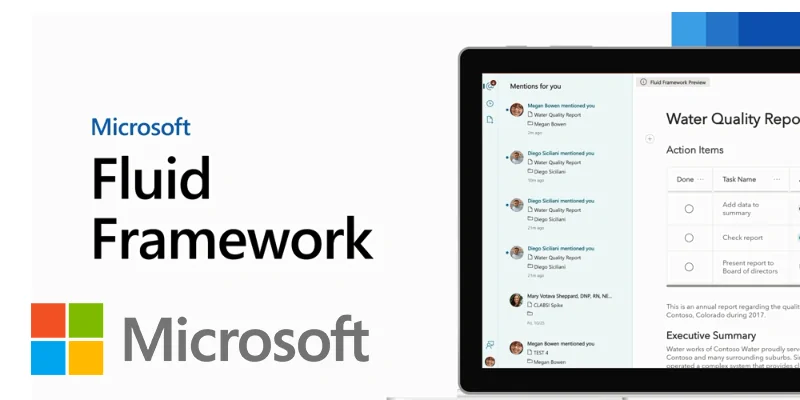Microsoft is Creating New Types of Office Document: The Fluid Framework

Microsoft is creating a new type of Office document: The Fluid Framework. The tables, graphs, and records which you normally see in Office documents are transformed into dwelling, collaborative modules that exist beyond conventional documents.
Microsoft calls for its Lego blocks Fluid components, and they can be edited in real time by anybody in any app. The notion is that you could create things such as a desk without needing to switch to various programs to get it done, and also the table will last on the web like a Lego block, free for anyone to edit and use.
Imagine you could take those Lego bits and set them in almost any place you needed: in emails, in conversations, in other apps. As individuals work on them, they will always be updated and include the most recent information.
Also Read: Google Chrome Big Safety and Security Updates Coming Soon
Microsoft’s Fluid Framework seems much like Google Docs, however, it is actually Google Docs about steroids. Microsoft is so confident it’s built the future of productivity, it’s now open-sourcing its own Fluid Framework so the remainder of the earth will help form what it’s generated. Some Office.com users may even be able to start getting a flavor of the Fluid future in the coming months.
Commonly you discover the program which lets you produce a table, graph, or record of jobs, and then you make a document, save it, and discuss it so people may contribute collaboratively. It’s something we continue seeing in fresh web-based apps, and it helped make Docs a hit at a time when Microsoft was focused on dedicated desktop-focused programs.
Microsoft is now hoping to fulfill Office users right where they are working on daily activities. The idea is to have the ability to produce these Fluid components in any program and immediately share them without switching to a dedicated program in the first place.
Also Read: Facebook 50-Person Video Messenger Rooms Alternative to Zoom is Now Available
Fluid is designed to make those tables, graphs, and lists always feel editable, no matter where you make them regardless of how you copy and share them into other apps. Rather than getting a static and dull graph you copied from Excel, you’ll find a graph that can be edited everywhere you glue it, and you’ll see everybody making edits as they happen. That may be in the middle of an email series, at a chat program including Microsoft Teams, as well as third-party apps eventually.
Fluid is incredibly fast, too, allowing several people to edit a single component or a whole workspace filled with Fluid components in real time. “A great deal of what’s become Fluid is the idea of becoming freaky-fast.
Microsoft is currently bringing Fluid to Office.com in preview in the coming months after showing off some early examples this past calendar year. Microsoft 365 Enterprise and schooling subscribers are going to have the ability to produce dynamic documents that numerous individuals can update in real time or use special Fluid components like tables, agendas, and job lists in Outlook on the web.
Fluid components will show up with a special outline indicating they’re alive in Outlook on the web. And much like present Office collaborative tools, you’ll realize the avatars of individuals that are now editing a Fluid component live and instantly within the email it is embedded in.
The Fluid rollout will be slow, starting first using Office.com and Outlook on the net, before appearing in Microsoft Teams later this season and maybe even desktop versions of Outlook next calendar year. At its own Build developer conference this week, Microsoft can be detailing how third-party devs will have the ability to make the most of Fluid in their own apps.
Fluid for programmers is a web-based framework that you could use to immediately make your apps collaborative,” explains Spataro. “It provides data structures that play low-latency synchronization. Those data structures connect among themselves with a relay service, which relay service was made to link endpoints.
That means developers can utilize Fluid to replace a static series within their app, so it’s switched into something which’s synchronized with everyone who boots up the app. Microsoft is offering more documentation and tools on the best way to do this, and also the hope is that developers will adopt Fluid.





